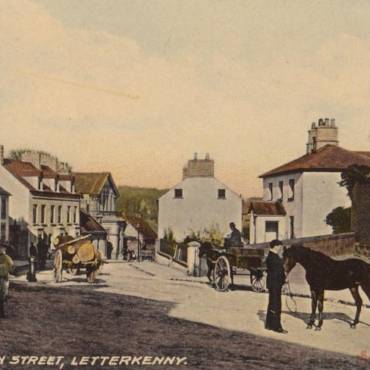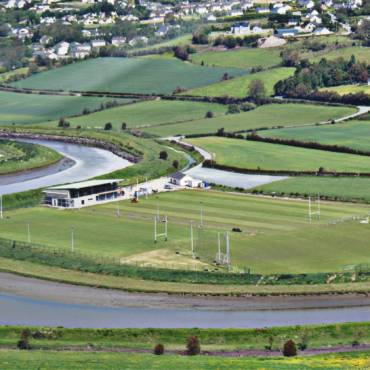ON THIS DAY: 20th September 1611: THE ORIGINS OF THE TOWN OF LETTERKENNY
A big day today in Letterkenny’s history, as it was on this day 405 years ago that the town as we know it today holds its origins.
Whilst archaeological discoveries of Bronze and Iron Age artefacts in the surrounding areas show small scale settlements over its entire history, there is no evidence to show that any town existed in either Letterkenny or Oldtown prior to the Ulster Plantation. The small balliboe of Leitir Ceanainn was once located within the overall territory of Tír Luighdeach, ruled by the O’Donnell clan since their accession to power in the 13th century but following the Flight of the Earls, the land is this area was deemed “forfeit to the Crown.” As a result, many English and Scottish settlers received large land grants to build new market towns.
Today’s town was in an area originally granted to Hugh McHugh Dubh O’Donnell, Red Hugh’s grand-uncle who held a castle at Rathmelton but following his arrival from Scotland to quell the rebellion of Cahir O’Doherty, Captain Patrick Crawford had been stationed at Lifford Fort, and for his loyalty, on 5th April 1610 he was chosen as a servitor who would receive land in the Kilmacrennan barony (north of the River Swilly). On the 20th September 1611, Captain Patrick Crawford was allocated the balliboes of Leitir Ceanainn, along with Ballyraine, Sallaghgraine, Gortlee, Glencar, Carnamuggagh, and Killylastin, 1,000 acres in total, for the purpose of building a new town. The Plantation papers state:
“20 September 1611
Grant to Patrick Crawford, of Lifford, Esq. The towns and lands of Ballylirehan and Letterkevin, one quarter each; Salregrean, 2/3 of a quarter; Gortlea, one and ½ quarter; Clancharaha and Carrownamoglagh, one quarter each; Killolosty, ¾ of a quarter; of Lallessedner, ½ quarter; in all, 1,000 acres, with free fishing in Loughswillie. The premises are created the manor of ballirehan, with 300 acres in demesne, and a court baron. Rent, 8/. English, to commence at Easter, 1614. To hold forever, as of the castle of Dublin, in common socage, and subject to the conditions of the Plantation of Ulster”
By 1612-13, little progress had been made with the development of the towns throughout Ulster but Patrick and his wife Joanna Everard had made some progress. Josias Bodley was sent to Ulster by King James to report on the overall progress of the Plantation and for Crawford’s estate he noted that at least a start had been made on the construction of a new town, as there was a “large number of stones collected for building.”
Another reason for the initial slow progress in the development of the new town of Letterkenny after 1611 was Captain Crawford’s preoccupation with military matters. Serving under Sir Oliver Lambert, he was called to serve in the siege of Dunyveg Castle on the island of Isla off the coast of Scotland. On the morning of 1st February 1615, Crawford was injured in the leg and died as a result of his wounds soon afterwards. Lambert wrote to the King telling him that: “Your Majesty has lost, in the death of Captain Craifford, a valiant and painful captain, by whom I was not a little assisted. The fortune of war is not to be resisted.”
Following Captain Crawford’s death, his wife Joanna married Sir George Marbury who was then granted the 1,000 acres and was charged with the task of completing the building of the town of Letterkenny. As stated, Bodley’s report had noted that small progress had already been made and to cater for the small number of planters who would have settled in the area already and to attract even more, Marbury was granted a patent for a market on 9th December 1616. By 1619, significant progress in the development of the towns across Ulster had been made and in a report by Pynnar, it was noted the building of a Market Town of Letterkenny with 40 houses:
“Captain Craifford was the first Patentee. Sir George Marburie hath 1,000 acres called Letterkenny. Upon this there is built a Bawne of lime and stone 60 feet square, with two flankers 12 feet high and standeth waste. Near adjoining to this Bawne there is built a Township wherein there is 40 houses wherein he dwelleth, and all these houses are inhabited with British tenants, being able to make 50 men. It is a great Market Town and standeth very well for the King’s service.”
Letterkenny’s urban development now sprang into action and would grow over the subsequent 405 years into the town we know today.



